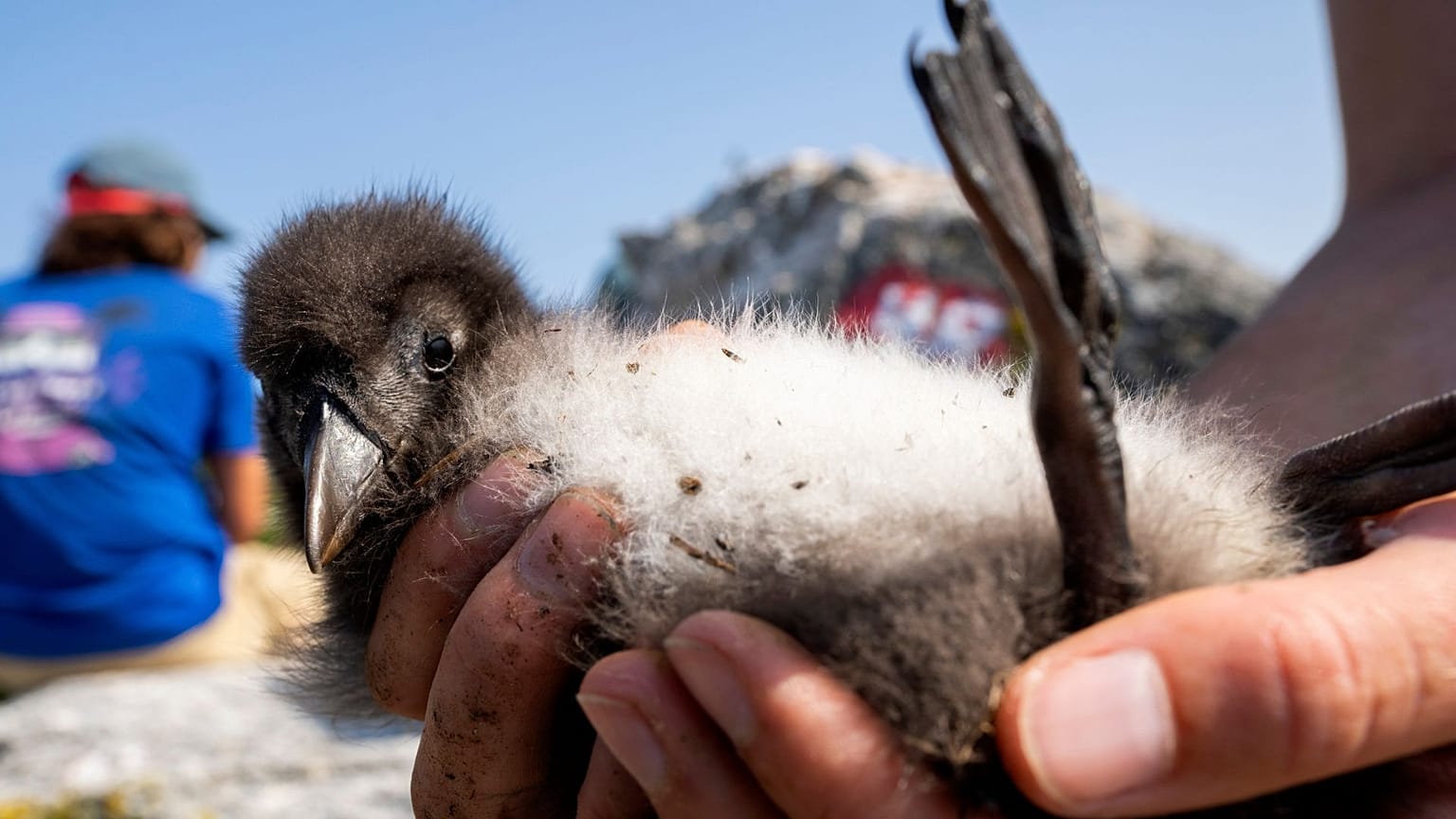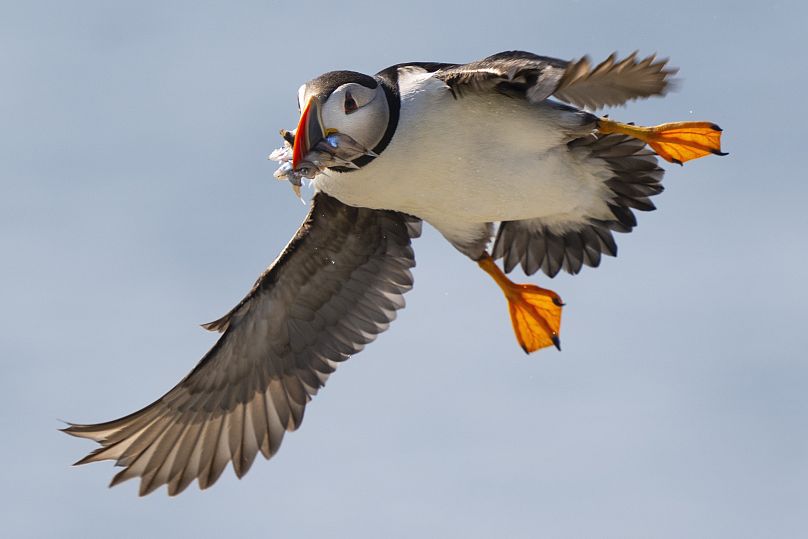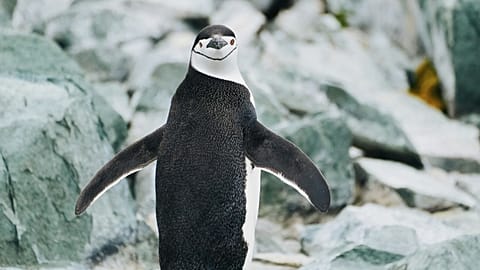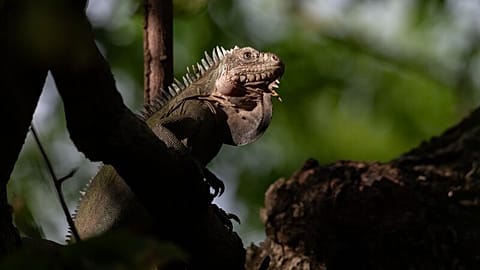Researchers say the birds’ resilience in the face of ocean heating shows the complexity of climate change impacts on ecosystems.
On remote islands in the North Atlantic, a unique seabird held its own this year in the face of climate change.
Atlantic puffins off the coast of Maine in the US had their second consecutive rebound year for fledging chicks after suffering a catastrophic 2021, according to scientists who monitor the birds.
The news flies in the face of environmental trends - as researchers have said warming waters off New England jeopardise the birds by reducing the kind of fish they need to feed their chicks.
One fish, though - the sand lance - has remained in abundance this year, allowing puffins to thrive, said Don Lyons, director of conservation science at National Audubon Society’s Seabird Institute in Bremen, Maine.
He said it’s a sign the impact of climate change on ecosystems is not always as tidy as we think.
Maine’s puffin colonies have made a big comeback
The encouraging news comes as the Audubon Society is celebrating its 50th anniversary of tending to Maine's puffin colonies, which it restored from just a few dozen pairs.
There are now as many as 3,000 birds, and the population is stable, Lyons said.
“This year is a good example of how complex things are. We can't boil it down to one variable,” he said. “We still have a lot to learn.”
The puffins - also known as “clowns of the sea” or “sea parrots” - nest in burrows and feed their chicks, called “pufflings”, small fish such as herring.
Two years ago, the colonies suffered one of their worst years for reproduction in decades due to a lack of those fish. Only about a quarter of the birds were able to raise chicks that summer.
How is climate change impacting puffins?
Audubon and other conservation groups have tied the fish shortage to warming ocean temperatures. The Gulf of Maine, which has puffin colonies on its islands, is warming faster than most of the world's oceans, and some recent years have been especially warm.
The early part of this summer appears to have been “still unusually warm,” said David Reidmiller, climate centre director at Gulf of Maine Research Institute in Portland, Maine.
About two-thirds of the puffins fledged chicks last year, Lyons said. The birds did not equal that number this year, he said, but they again had a better year than 2021 despite a less than ideal summer of hot, rainy conditions.
The puffins' ability to reproduce despite environmental changes speaks to the resiliency of seabirds, said Bill Sydeman, president and chief scientist of the Farallon Institute, a marine preservation organisation based in California.
However, the long-term dangers posed by climate change - such as fatal heatwaves, loss of food, loss of islands to sea level rise and inability to breed - remain existential threats to puffins and many other seabirds, he said.
“The problem with climate change is these breeding failures and low breeding productivity years are now becoming chronic,” Sydeman said. “There will be fewer young birds in the population that are able to recruit into the breeding population.”
Where else do puffins live and breed?
Maine's puffins are the only breeding Atlantic puffins in the US. Worldwide, the species lives in the North Atlantic from Maine and Canada to Europe.
Other countries with large puffin populations, such as Iceland, have seen the birds decline in number in recent decades.
The Maine puffin population once dwindled to only about 70 pairs on tiny Matinicus Rock. Hunters who pursued the birds for their meat and feathers had nearly wiped them out by the early 1900s. Stephen Kress, an Audubon ornithologist, sought to grow puffin colonies starting in the 1970s by relocating chicks from Canada to Eastern Egg Rock, another tiny island.
Today, puffins live on Matinicus as well as Eastern Egg Rock, Seal Island and Petit Manan Island. On a recent trip to Eastern Egg Rock, located off St. George, dozens of puffins delighted tour boats as they took off in flight and dove into the water in pursuit of fish.
The adult birds in the colonies appear fairly robust, and it's "likely the population is stable, and it could still be growing,” Lyons said.
The effects of climate change on seabirds have been a focus of scientific inquiry in recent years. Interest in the subject has accelerated because of die-offs of some of the puffin's auk family relatives, such as common murres and Cassin's auklets off the West Coast.
The challenges faced by seabirds make successful breeding seasons especially important, said P. Dee Boersma, a University of Washington professor of biology and director of the university's Center for Ecosystem Sentinels.
“What that means is we should be more cautious and concerned about reproductive failures and things like that to make sure that in good years everyone that wants to has a chance to breed, and do well,” Boersma said.
Watch the video above to learn more about the changing fortunes of the Atlantic puffin colonies off the coast of Maine.



















